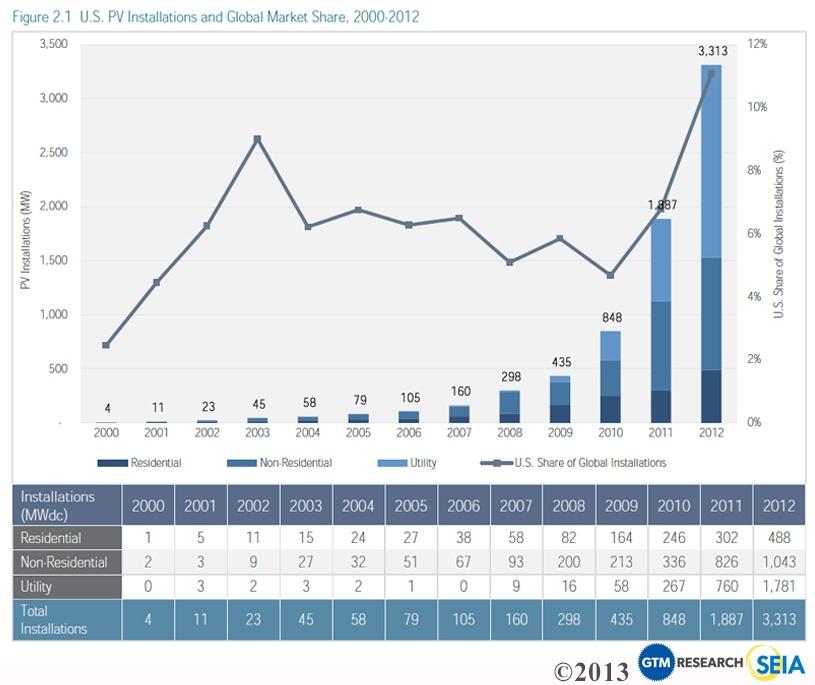
Following through on President Barack Obama's plans to combat climate change and boost energy productivity, the U.S. Department of Agriculture on Sept. 18 announced it is providing $68 million in funding for 540 renewable energy and energy efficiency projects around the nation.
Agriculture Secretary Tom Vilsack announced the funding while visiting North Carolina to highlight USDA's investments in rural renewable energy projects. He emphasized the economic, as well as social and environmental, benefits government support and stimulus is having in the young but fast-growing renewable energy and energy efficiency sectors.
"These loan guarantees and grants will have far-reaching impacts nationwide, particularly in the rural communities where these projects are located," Vilsack said. "Investing in renewable energy and energy efficiency will continue the unprecedented increase in home-grown energy sources and American energy independence we've seen in recent years. This is creating jobs, providing new economic opportunities and leading the way to a more secure energy future."
$68 million in USDA funding for 540 projects
The $68 million in funding is being provided via USDA's Rural Development's Rural Energy for America Program (REAP). REAP was created via the 2008 Farm Bill. The program was reauthorized by the 2014 Farm Bill, which recently passed into law, USDA notes in a press release.
“REAP has supported more than 8,800 renewable energy and energy efficiency projects nationwide,” USDA highlighted. “During this period, USDA has provided more than $276 million in grants and $268 million in loan guarantees to agricultural producers and rural small business owners.”
This latest announcement of DOA funding for renewable energy and energy projects is the latest in a series of funding announcements that follow through on President Obama's “all of the above” energy strategy.
Funding for bio jet fuel production
Two weeks ago USDA announced a $105 million loan guarantee for Fulcrum Sierra Biofuels LLC – the first loan guarantee USDA has made for the production of bio jet fuel. The loan guarantee will facilitate Fulcrum's ability to secure bank financing to build a bio-refinery in McCarran, Nevada, that is to produce jet fuel from municipal solid waste.
Commenting on the Fulcrum Sierra Biofuels loan guarantee while speaking at the National Clean Energy Summit 7.0 in Las Vegas the week of Sept. 4, Secretary Vilsack said:
"This represents a huge step forward in the development of clean, renewable, job-creating American fuels," Vilsack said during a speech at the National Clean Energy Conference. "The nation is entering a new energy age that will make us more energy independent, cut carbon pollution and strengthen our economy, especially in rural communities where clean fuels will be produced."
New solar commitments and executive actions
The USDA's announcement also came on the same day President Obama announced new executive actions and commitments from organizations around the nation to continue advancing development of solar energy technologies.
On Sept. 18, the White House announced “a series of public and private sector commitments and executive actions to advance solar deployment and promote energy efficiency.” Elaborating, the White House listed them as follows:
- Partnering with up to three military bases to create a veterans solar job training pilot;
- Investing $68 million in 540 renewable energy and energy efficiency projects in rural areas across the country, including 240 solar projects;
- Proposing an energy conservation standard for commercial unit air conditioners that has the potential to save more energy than any previously issued standard;
- Supporting funding for clean energy and energy efficiency for affordable housing;
- Strengthening commercial and residential buildings codes; and
- Harmonizing the power of national service and volunteerism to tackle climate change and its effects.
All told, these executive actions and commitments are expected to reduce carbon pollution by some 300 million metric tons through 2030. That's equivalent to taking more than 60 million cars off the road for one year. It will also save on energy bills for homes and businesses to the tune of over $10 billion, the White House highlighted.
Joining with the president and his administration, 50 companies, states, communities and leaders in the field of multi-family housing pledged to deploy over 35 megawatts' (MW) worth of solar energy systems and improve energy efficiency. That's enough to power thousands of U.S. homes. Their energy efficiency commitments, moreover, should lower energy bills spanning over 400 million square feet of office space, according to the White House.
*Images credit: 1), 2) USDA; 3) SEIA, GTM Research

An experienced, independent journalist, editor and researcher, Andrew has crisscrossed the globe while reporting on sustainability, corporate social responsibility, social and environmental entrepreneurship, renewable energy, energy efficiency and clean technology. He studied geology at CU, Boulder, has an MBA in finance from Pace University, and completed a certificate program in international governance for biodiversity at UN University in Japan.














